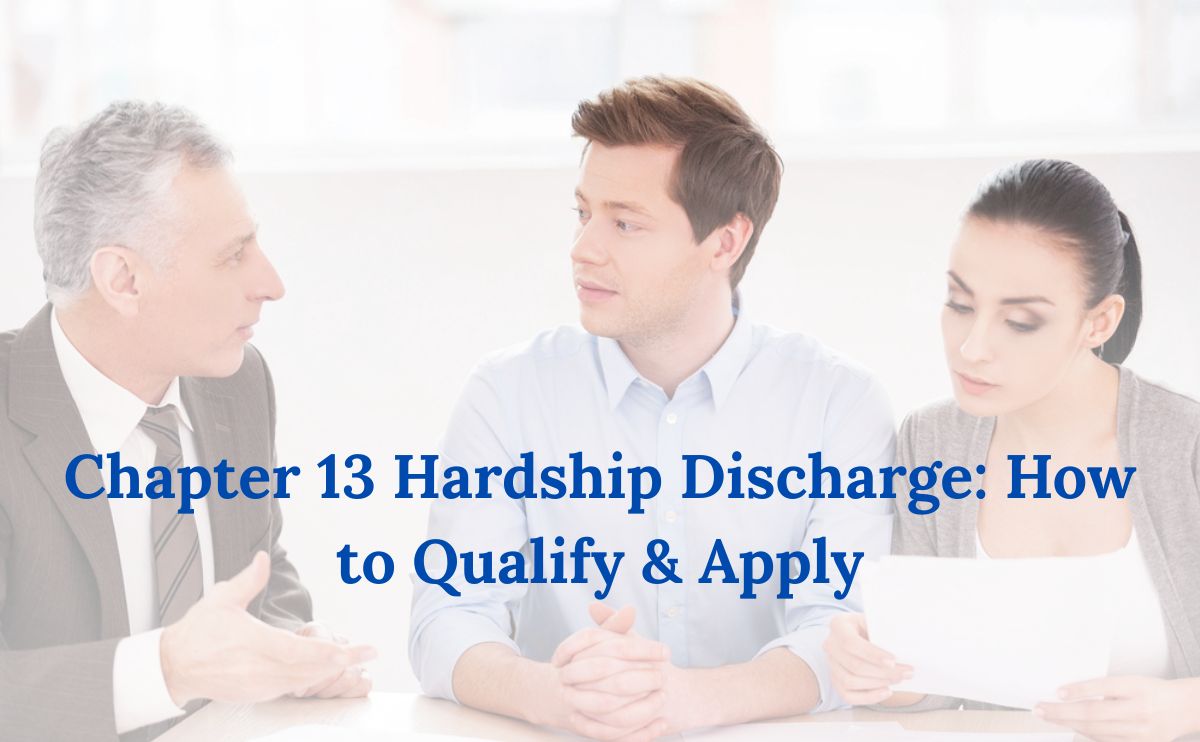Free Consultation
To discuss your financial situation and learn more about your debt relief options, give us a call at (520) 745-4429 or (480) 788-0098.
 Tucson(520) 745-4429
Tucson(520) 745-4429
 Mesa/Phoenix (480) 788-0098
Mesa/Phoenix (480) 788-0098

Life can shift fast. A layoff, a sudden illness, or the loss of a spouse can wreck the most careful repayment plan.
At Yusufov Law Firm, PLLC, we guide folks in Mesa, Phoenix, and Tucson through those rough moments with practical bankruptcy solutions. This article explains the Chapter 13 hardship discharge, outlines the rules, and walks you through the court process all in plain language. The material here is for general information only, not legal advice.
In a normal Chapter 13 case, you make monthly payments for three to five years, then obtain a full discharge at the finish line. However, the hardship discharge is different. It lets you end the case early when an unexpected event makes future payments impossible, yet it still wipes out many of the same debts.
This early exit is never automatic. The judge must see proof that you meet each requirement before signing off.
The Bankruptcy Code lists three conditions, and you have to satisfy every one of them, not just one.
You must show that the setback was outside your power and not a short-term bump in the road. Permanent job loss, a disabling injury, or the death of a primary wage earner often meet the test.
The court usually asks for medical reports, termination letters, or other hard proof to confirm the long-term impact.
Before stopping the plan, unsecured creditors must have received at least the amount they would have been paid in a hypothetical Chapter 7 liquidation. Imagine your home had $50,000 in non-exempt equity when you filed. A Chapter 7 trustee could have sold the house and paid that sum to creditors, so your plan must have already turned over the same $50,000.
This hurdle is often the toughest, especially when large non-exempt assets existed at the start of the case.
You must convince the judge that lowering the payment or extending the term will not solve the problem. A formal motion to modify is not strictly required, yet many debtors still file one, then document why no amount of cutting can free up cash.
Detailed budgets, updated income records, and testimony often drive home the point.
Once you confirm that the three conditions fit your situation, the next move is filing a motion for hardship discharge in the bankruptcy court.
The judge may either rule on the paperwork alone or set a short hearing. If there is a hearing, be ready to testify about your change in circumstances and why no further payments are possible.
A hardship discharge wipes out many unsecured obligations, yet some debts survive.
The list can feel long, yet most credit card balances, medical bills, and signature loans vanish for good.
Certain claims fall into a gray area. They are wiped out unless the creditor files an adversary lawsuit on time.
| Category | Typical Example |
| Fraud-related purchases | Running up a card while planning to file |
| Willful and malicious injury | Intentional property damage |
| Embezzlement or breach of trust | Theft from an employer |
Most creditors never file, yet if one does, you or your lawyer must respond or the debt could survive the discharge.
When the strict Chapter 13 rules block a hardship discharge, conversion to Chapter 7 remains a fallback. By converting, you stop plan payments entirely.
The Chapter 7 trustee will collect any non-exempt assets at that point, sell them, and use the money to pay creditors in order of priority. Once the sale process ends, you receive a standard Chapter 7 discharge on remaining eligible debts.
Yusufov Law Firm, PLLC, focuses on practical solutions that let Arizona residents regain control of their finances. Whether you need help drafting a hardship motion or exploring conversion, we stand ready to act.
You can call us at 520-745-4429 (Tucson) or 480-788-0098 (Phoenix), or reach us through our Contact Us page to discuss your case, your paperwork, and the best next step.
Timely advice often makes the difference between a fresh start and a costly mistake. Let’s discuss how we can lighten your debt load and get you moving forward again.
To discuss your financial situation and learn more about your debt relief options, give us a call at (520) 745-4429 or (480) 788-0098.
© 2010-2025 Yusufov Law Firm PLLC. All Rights Reserved | Disclaimer | Sitemap |